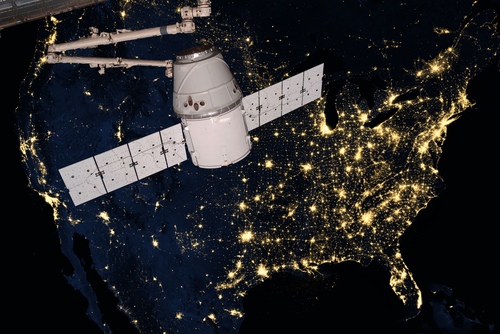NASA, SpaceX to launch spacecraft to find another Earth
We speak to scientists behind a new mission to find nearby exoplanets that could host life.
TESS, a new NASA planet-hunting spacecraft, is set to write the next revolutionary chapter in astronomy by revealing more details about the nearest exoplanets and, perhaps, uncovering the first signs of life seen beyond our spinning rock.
For centuries we knew of no planets beyond this solar system, until the first trickle of exoplanet discoveries in the 1990s. Over the past several years NASA’s Kepler Space Telescope has accelerated the pace of discovery, making it clear the galaxy is awash with planets. But Kepler is crippled and running out of fuel.
Fortunately, its successor, the Transiting Exoplanet Survey Satellite, is waiting in the wings. More accurately, it’s sitting in the nose cone of a rocket in Florida.
TESS is scheduled to launch Monday aboard a SpaceX Falcon 9 rocket, one of many missions Elon Musk’s rocket company has partnered on with NASA. SpaceX also uses its Dragon cargo ships to resupply the International Space Station.
NASA’s TESS will monitor 200,000 of the nearest stars using the same discovery method that enabled Kepler to spot 2,600 confirmed exoplanets. Its four wide-field cameras will watch for tell-tale dips in brightness that can be caused by an orbiting planet passing in front of a star.
“TESS is going to essentially provide the catalog, like the phone book, if you will, of all the best planets for following up, for looking at their atmospheres and studying more about them,” MIT astrophysics professor Sara Seager told me. Seager is part of the science leadership team for TESS and a driving force in the search for signs of life around other stars.
After TESS finds those worlds, a more sophisticated telescope, such as the James Webb Space Telescope that is set to launch in 2020, will be used to look for those signatures of potential life.
“To me, TESS represents the very first opportunity to really, truly make progress in this area of trying to find signs of life on other worlds,” Seager says. “It really has a chance to find a rocky planet … that’s the right distance from its star, the right temperature to have life on its surface. Tess will find a pool of planets like that.”
Seager notes that many of the worlds TESS is likely to find may be similar to Earth in size and rocky composition, but will be different and weird in other ways.
Like the nearest exoplanet, Proxima b, many will be in very close orbits of dwarf stars that prevent them from turning on their axes, leaving one side stuck in permanent nighttime darkness. These planets may also be showered by radiation from the frequent solar flares of red dwarf stars.
“We learned from Kepler that there are more planets than stars in our sky, and now TESS will open our eyes to the variety of planets around some of the closest stars,” Paul Hertz, director of the astrophysics division at NASA headquarters, said in a statement. “TESS will cast a wider net than ever before for enigmatic worlds.”
It’s been a busy time for SpaceX. In recent weeks it’s launched the first Falcon Heavy rocket and received approval for a massive satellite broadband project, and it will soon launch a rocket that it hopes can be re-used up to 100 times. Musk, meanwhile, has his eyes set on Mars, a planet much closer to home. It’s even planning to raise more money to help it achieve those goals.
Musk plans for sending humans to Mars are still years away, but Seager estimates we might see TESS’ first images of the night sky about 10 days after launch. The science mission, however, won’t officially begin until about two months of testing the spacecraft’s different systems are complete.
“I can’t wait to see TESS launch and participate as the next step in human exploration of new worlds takes shape,” Lisa Kaltenegger, a Cornell University professor and TESS science team member, said via email. “When looking up at night, we will be able to point at bright stars in the night sky and say, ‘Right there, there is a star that hosts another Venus, Mars, or maybe even another Earth.'”

